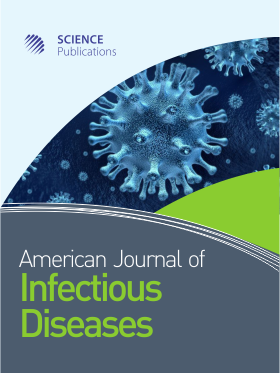Influenza Surveillance in Russia Based on Epidemiological and Laboratory Data for the Period from 2005 to 2012
- 1 Research Institute of Influenza, Russia
- 2 D.I Ivanovsky Institute of Virology, Russia
- 3 Centers for Disease Control and Prevention, United States
Abstract
Exchange of information on and sharing of influenza viruses through the GISRS network has great significance for understanding influenza virus evolution, recognition of a new pandemic virus emergence and for preparing annual WHO recommendations on influenza vaccine strain composition. Influenza surveillance in Russia is based on collaboration of two NICs with 59 Regional Bases. Most epidemiological and laboratory data are entered through the internet into the electronic database at the Research Institute of Influenza (RII), where they are analyzed and then reported to the Ministry of Public Health of Russia. Simultaneously, data are introduced into WHO’s Flu Net and Euro Flu, both electronic databases. Annual influenza epidemics of moderate intensity were registered during four pre-pandemic seasons. Children aged 0-2 and 3-6 years were the most affected groups of the population. Influenza registered clinically among hospitalized patients with respiratory infections for the whole epidemic period varied between 1.3 and 5.4% and up but to 18.5-23.0% during the peak of the two pandemic waves caused by influenza A(H1N1) pdm 09 virus and to lesser extent (2.9 to 8.5%) during usual seasonal epidemics. Most epidemics were associated with influenza A(H1N1), A(H3N2) and B co-circulation. During the two pandemic waves (in 2009-2010 and 2010-2011) influenza A(H1N1) pdm 09 predominated. It was accompanied by a rapid growth of influenza morbidity with a significant increase of both hospitalization and mortality. The new pandemic virus displaced the previous seasonal A(H1N1) virus completely. As a rule, most of the influenza viruses circulating in Russia were antigenic ally related to the strains recommended by WHO for vaccine composition for the Northern hemisphere with the exception of two seasons when an unexpected replacement of the influenza B Victoria lineage by Yamagata lineage (2007-2008) and the following return of Victoria lineage viruses (2008-2009) was registered. Influenza surveillance in Russia was improved as a result of enhancing capacity to international standards and the introduction of new methods in NICs such as rRT-PCR diagnosis, regular testing of influenza viruses for susceptibility to antivirals, phylogenetic analysis as well as organization of sentinel surveillance in a number of Regional Base Laboratories. Improvements promoted rapid recognition of the appearance a new pandemic virus in the country and enhancement of confirmation tests in investigation of influenza related death cases.
DOI: https://doi.org/10.3844/ajidsp.2013.77.93

- 7,174 Views
- 4,059 Downloads
- 22 Citations
Download
Keywords
- Influenza
- Virus
- Morbidity
- Hospitalization
- Mortality
- Laboratory Confirmation
- Virus Isolation
- Antigenic Properties
- Antivirals
- Sentinel Surveillance
